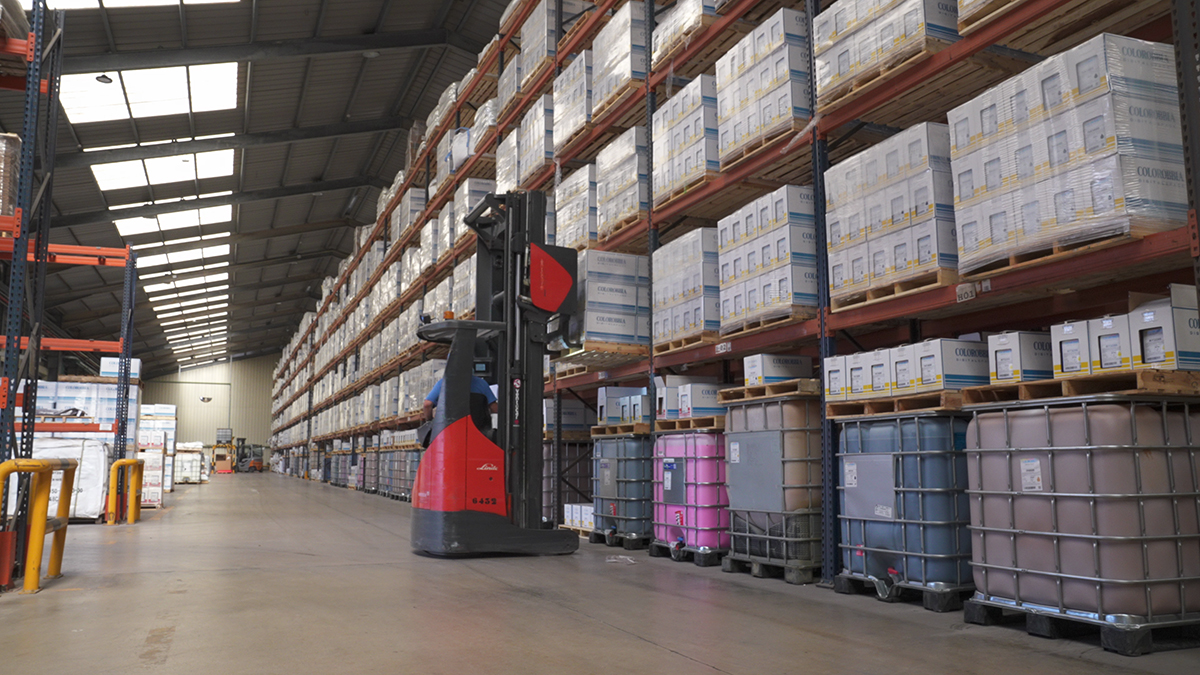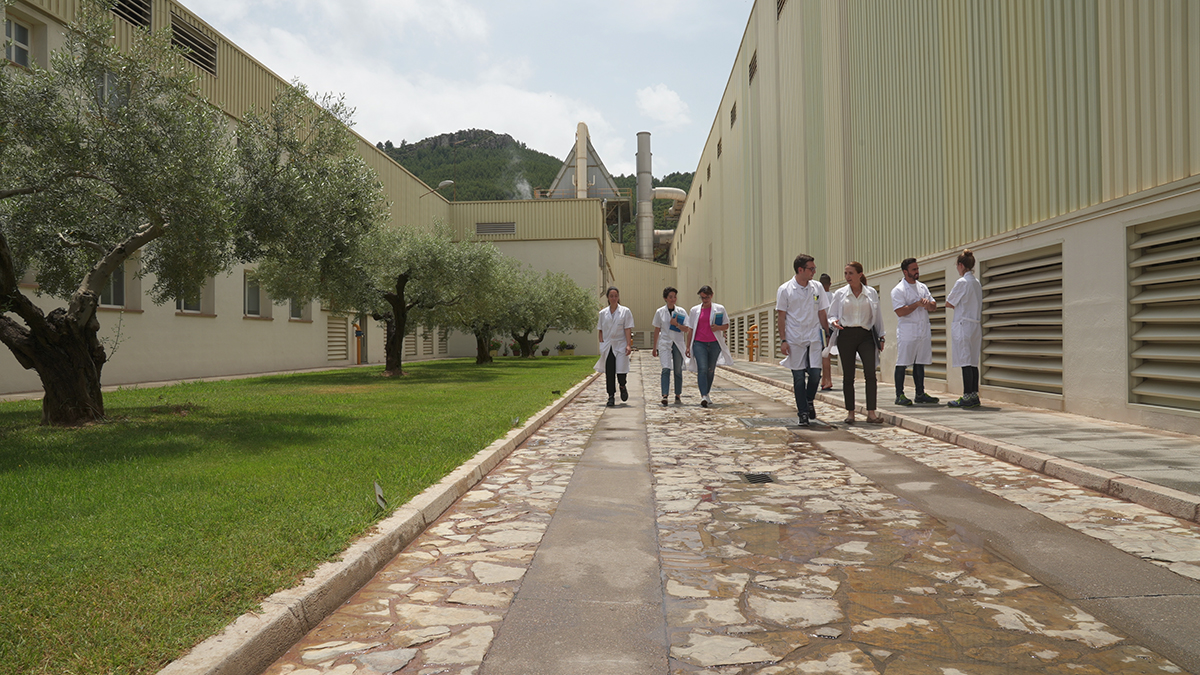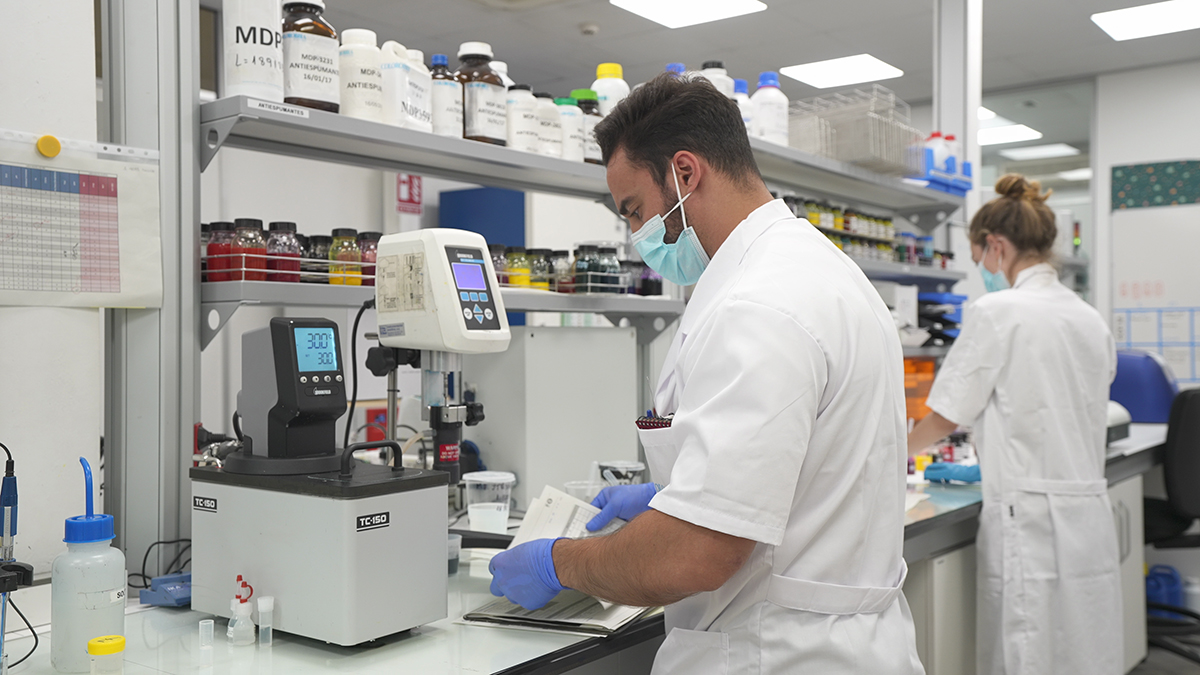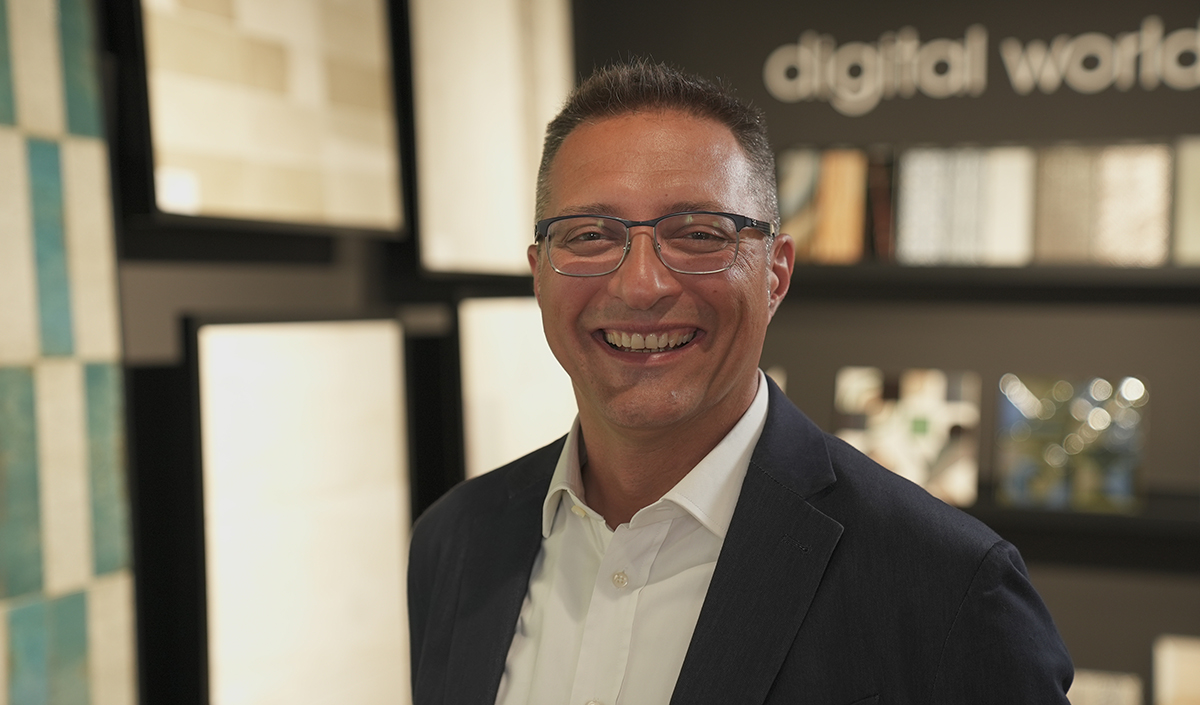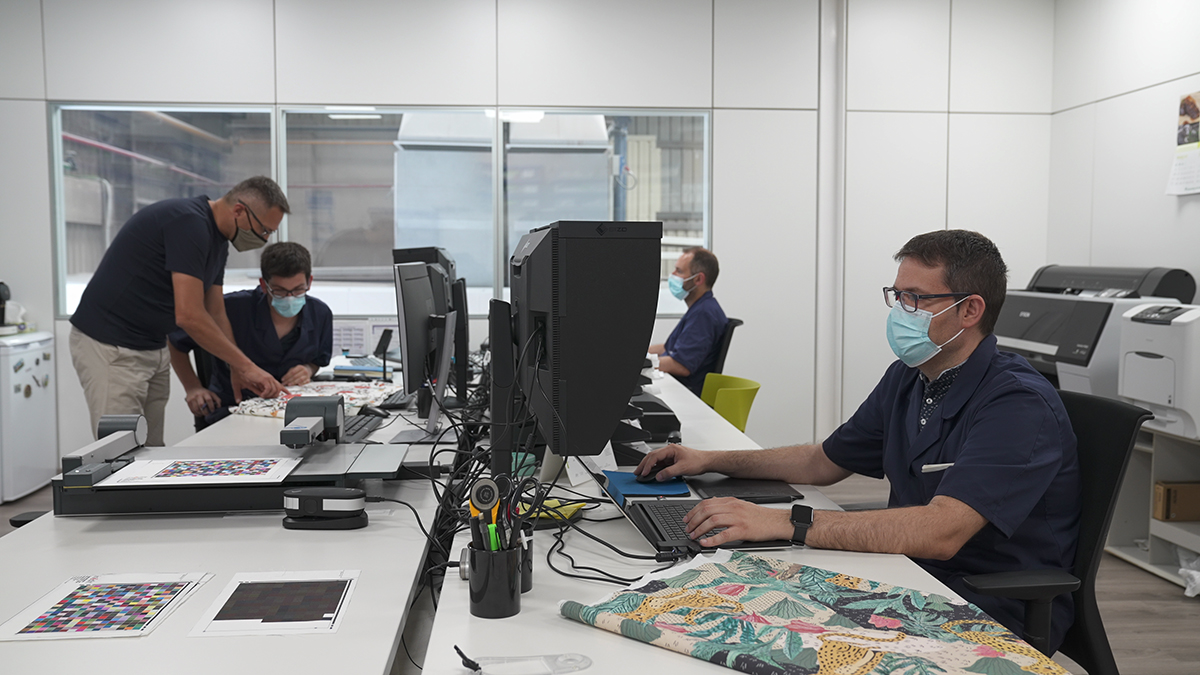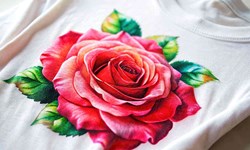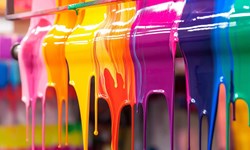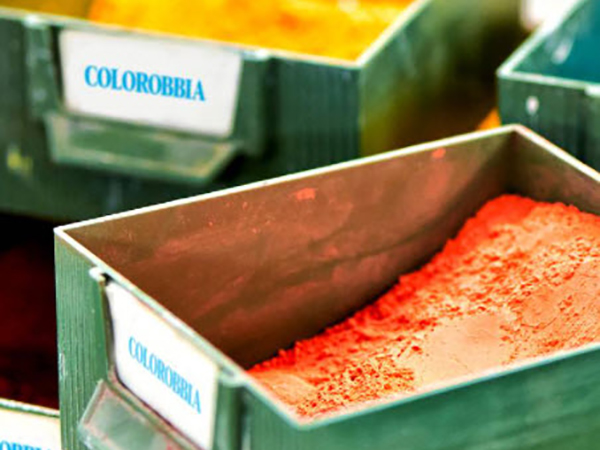
Textile pigment inks to redefine industrial digital textiles
By Madelaine Thomas, Lorenzo Villa
Sponsored by Colorobbia
After leading the digital transformation of ceramic decoration, Italian group Colorobbia has applied its expertise in pigment inkjet inks to textiles.
The digitisation of textile printing has been ongoing on for over two decades, with the market share of digital textile printing continuing to grow. This digitisation has typically involved small and medium-sized manufacturers of printing technology, software, ink and process chemicals. Rather than causing disruption, this digital transformation has brought the entire supply chain together, such as in the ceramics industry previously.
Beginning with the first single-pass printers in 2000, by 2010 digitisation in the ceramics industry was well underway. This was due to the joint initiative of tile manufacturers, machinery builders and the few groups involved in the formulation of dyes and glazes. In the latter category, Colorobbia has 28 subsidiaries in 18 countries, over €600m (almost US$700m) in turnover and 2,000 employees. The company holds a 13% share in the global ceramics market.
The Italian group, which celebrates its 100th anniversary this year, has its strategic headquarters for inkjet development in Castellón de la Plana, north of Valencia, Spain. It was here that Colorobbia opened its first digital R&D laboratory in 1995 and, in 2016, launched an investment plan to formulate and produce inkjet inks for textile printing.
A technology hub focused on inkjet
Established in 1988 to produce frits, glazes, pigments and other products for the ceramics and glass industries, the production unit covers 400,000 sqm. It employs 470 people, 30% of whom are graduates and engaged in R&D.
“Colorobbia España has made diversification its strong point,” says Edoardo Bocini, system & processes integration, Colorobbia. "We based the development of inkjet dyes in Castellón because it was here that the digitisation of global ceramic decoration began in the late 1990s."
Along with the district of Sassuolo (Italy), which has allied in favour of sustainable energy transition, the Castellón De la Plana cluster is Europe’s leading ceramic production hub. It is home to more than 200 tile manufacturing companies and manufacturers of frits, pigments, machinery, a university faculty, laboratories and research centres, and art and design schools for ceramics. As per the textile sector, but for different reasons, the European ceramic industry experienced a sharp downturn in the early 2000s, which gave impetus to the efficiency and digitalisation of production processes. Colorobbia España produces over 250,000 tonnes of semi-finished products every year, including 10,000 tonnes of inkjet inks.
“At Colorobbia we formulate and produce all our inkjet inks in-house, using a team of researchers and engineers with decades of experience,” explains Gonzalo Trilles de Castro, managing director of Colorobbia España. “We use the most advanced technologies and select the best raw materials to ensure excellent product quality and extended shelf lives.”
With the start of the formulation of T-Inks, the company has expanded its production facilities, built laboratories, mixing and packaging departments, and hired 12 new researchers.
Global, multidisciplinary R&D
Colorobbia España's R&D, analysis and testing laboratories, together with its technical and commercial departments, employ 30 researchers and form the backbone for the development and constant improvement of the group's inkjet chemistries. Javier Pérez Martínez, director of R&D and Innovation at Colorobbia Group, discusses the company’s discovery: “In 1994, Colorobbia was the first company in Spain, in the ceramic sector, to invest in a scanning electron microscope with microanalyzer, a cutting-edge technology at that time."
He continues: "That was just the beginning of a journey of discovery and investment, which has led us to have one of the best ceramic R&D labs in the world, which today is part of a global ecosystem of excellence with other QC and TA labs."
To develop new products and optimise existing products, researchers in the textile R&D lab use countless instruments, including particle analysers, viscometers, PH, conductivity and moisture analysers, dispersers, grinders and drop watchers. In the analysis lab, which serves all company departments and end customers, raw materials, semi-finished and finished products are analysed to isolate individual components of a compound and understand the cause of unexpected phenomena or defects in customers’ decorating materials.
The engineers of the technical/commercial department produce samples for OEMs and integrators and support end-users, from the first steps of product use through to colour profiling and the start of industrial-scale production.
Pérez adds: “We created the T-Inks range to ensure extreme reliability, reduced setup times and minimal maintenance in industrial inkjet printers. For textile printing companies, the ink/printer combination is crucial. That’s why we work closely with the most important OEMs in the digital world.”
In the testing lab, equipped with printers, impregnation systems, dryers, crock metres and washing units, fabrics printed with T-Inks are tested for abrasion resistance, washing and UV exposure.
“Pigment inks have always been used in home textiles, but it is challenging to create a digital version with all the required properties,” Pérez points out. “By formulating T-Inks, we have developed a product with extraordinary wet and dry rub fastness, and we are proud of the performance we have achieved.”
A system of values and benefits that goes beyond ink
With the strength of the company’s experience in ceramics where inkjet printers are subjected to exhausting production cycles, consumption is high, automation is total and production costs are reduced to the bone, Colorobbia says it entered the textile market to change the rules of the game.
The company focused on pigment chemistry, a candidate to replace reactive inks and simplify an objectively complex and energy-intensive process. The group appointed Alberto Ghisellini, an engineer and salesman with a long experience in industrial inkjet, to head up its textile division.
He says: “In the textile industry, pigment inks will revolutionise production, eliminating the need to steam and wash the fabric, with huge operational and environmental benefits.”
He continues: “Colorobbia has invested not only to meet existing demand, but to also create and supply a textile pigment of a quality and reliability that will accelerate the transition from analogue to digital at an unprecedented rate.”
With product development completed, Colorobbia conducted its first T-Inks tests in 2017 and previewed the product at FESPA 2019 with Zimmer Austria, receiving very positive feedback. At the same time, it started alpha testing on Kerajet multi-pass printers at a Spanish printer. In February 2020, the company finally started beta testing at Spanish company S.G. Hogar, again with Kerajet technology, which was completed in February 2021.
Ghisellini explains: “We have completed a five-year process of market analysis, research, development and formulation. Today, we are ready to support the digital transformation of the textile industry and the decorative markets using pigment inkjet inks.”
Stable, high quality and affordable
With T-Inks, Colorobbia wanted to overcome all the limitations inherent in inkjet pigment. For the company this means offering products and services capable of effectively supporting the high production volumes of industrial customers and guaranteeing quality and cost-effectiveness that would justify replacing pre-existing analog and digital technologies.
“Our offer goes beyond colourants and focuses on technical and application support,” explains Ghisellini. “In textiles, we offer consulting throughout the entire workflow, from substrate preparation and colour management to printing and finishing.”
T-Inks are available in CMYK process colours, plus Red, Green, Orange, Light Cyan, Light Magenta and Light Black. The product is packaged in 1kg bottles, 5kg canisters and 1,000kg tanks to feed centralised pumping systems to printers. T-Inks are compatible with Dimatix Starfire print heads with recirculation, on which Colorobbia offers a two-year warranty. Other print heads, with and without recirculation, are currently being tested.
Prints made with T-Inks have been tested for washing according to ISO 105-C06:2010, and wet and dry abrasion according to ISO 105-X12:2016, never scoring less than 4/5 out of 5 and 3/4 out of 4. Also, in the bleaching resistance test, performed according to ISO 105-N01:1993 and in the light fastness test, performed according to ISO 105-B02:2014, T-Inks achieved (respectively) an average score of 5 and 8, the highest possible. In addition, T-Inks have successfully passed (5/5) the dye migration test in PVC coatings, conducted according to ISO 105-X10:1996. Furthermore, the T-Inks range is certified Eco Passport by OEKO-TEX and complies with Inditex protocols on the absence of formaldehyde, amines, and phenols. Thanks to flexible manufacturing, a 12-month shelf life and a direct distribution model that does not depend on external logistics, distributors, and retailers, Colorobbia delivers T-Inks directly to printers, reducing time-to-market and product price.
Ghisellini says: “T-Inks cuts decoration costs by 30% compared to average market values. We are competitive with both inkjet reagent and screen-printing pigment, and in the future T-Inks will be even more advantageous."
Ready for the global textile challenge
Colorobbia comes to the textile pigment market with the strength of its production and logistics units in some of the most dynamic textile markets, including Italy, Spain, Portugal, Turkey, Russia, Brazil, Mexico, the US, Vietnam, China, India, and the UAE. When adequate volumes are reached, the group is ready to build mixing and packaging plants in one or more locations. Colorobbia has a global team of hundreds of field engineers, customer service representatives, colour and application experts and a physical and remote support infrastructure covering all major languages and time zones, the company says.
*Thumbnail credit: Colorobbia
Have your say. Tweet and follow us @WTiNcomment


